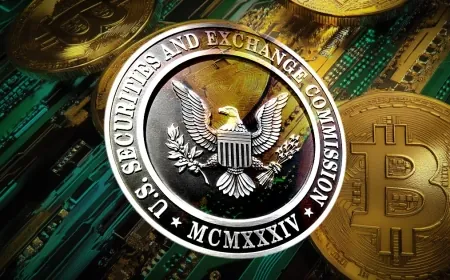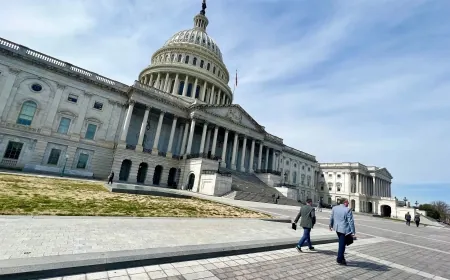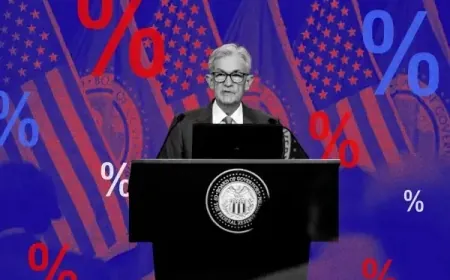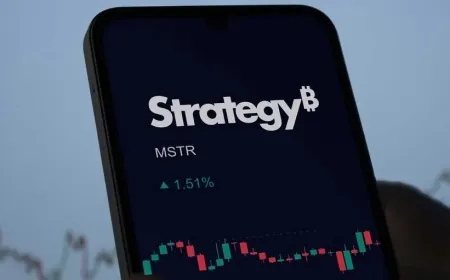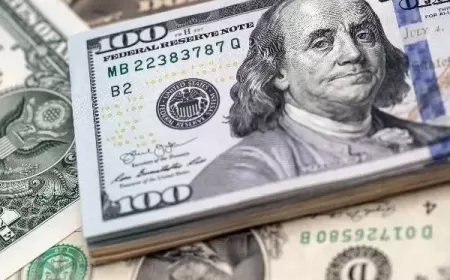Bitcoin Hits $124,000. Can It Reach $150K?
Bitcoin hit $124,000 this week, its highest level yet. Markets are weighing if the rally can extend to the $150,000 range.

Bitcoin broke above $124,000 in mid-August, setting a new all-time high and extending a rally that has lifted the world’s largest cryptocurrency almost 30% since the start of the year. The surge has shifted attention to the next threshold: whether Bitcoin can climb toward $150,000 or lose steam before it gets there.
Unlike earlier rallies driven largely by retail trading, this year’s advance has been fueled by policy changes in Washington, growing allocations from institutional investors, and expectations of lower interest rates. Those same factors will determine whether the latest record proves durable or gives way to another correction.
The Policy and Market Changes Behind $124,000
Earlier Bitcoin booms were dominated by small investors chasing rapid gains. In 2017, retail enthusiasm and a flood of initial coin offerings drove the price to $20,000 before it collapsed. In 2021, the run to $69,000 was fueled by pandemic-era liquidity, online trading platforms, and the explosive growth of NFTs.
This time is different. The latest surge has been built on institutional demand. Spot Bitcoin exchange-traded funds, approved in the U.S. earlier this year, are drawing steady inflows from pension funds, family offices, and investment managers. The numbers are clear: billions of dollars have been added to these funds in just a few months, showing that Bitcoin is no longer seen only as a speculative gamble but as a legitimate portfolio asset.
Another shift came with the decision to allow cryptocurrency exposure in 401(k) retirement accounts. Even if adoption is slow, the move opens a potential channel for trillions of dollars in long-term savings. Unlike day traders who can move in and out quickly, retirement plans create consistent, sticky demand that may help support prices over time.
Retail traders are still present, of course, but their role is secondary. Instead of leading the market higher, they are joining a rally already pushed forward by larger institutions. This creates a very different market structure — one that is less dependent on hype but also more sensitive to broader economic forces.
Money, Rates, and Inflation
Bitcoin’s rise this year has not happened in isolation. It has moved closely with expectations about the U.S. economy and Federal Reserve policy.
Through the first half of 2025, inflation numbers cooled, raising hopes that the Fed could cut interest rates by September. Lower rates usually make investors more willing to buy risky assets, and Bitcoin has benefited from that optimism.
But the relationship also makes Bitcoin more vulnerable. When inflation data in mid-August suggested rising price pressures, markets quickly reconsidered how aggressive the Fed could be. Bitcoin, which had just touched $124,000, slipped back toward $120,000 almost immediately. The move underscored how tightly linked it has become to the same indicators that drive stocks and bonds.
This is a striking change. For years, Bitcoin’s supporters argued that it moved independently of traditional assets and could act as a hedge against financial instability. That argument looks weaker today. With large funds now holding Bitcoin, it often trades more like a high-risk tech stock than an uncorrelated asset. In good times, this brings upside; in periods of stress, it can mean sharp drops.
Where Traders See Bitcoin Going
Prediction markets give a snapshot of how participants are pricing Bitcoin’s next moves. On Kalshi, the platform that lets users wager on economic and financial outcomes, the odds currently stand at:
-
75% chance Bitcoin touches $130,000 before the end of the year.
-
53% chance it crosses $140,000.
-
37% chance of hitting $150,000.
-
Just 10% chance of $200,000 in 2025.
The breakdown shows confidence in near-term gains but a sharp drop-off as the numbers climb. In other words, traders see $130K or $140K as plausible targets, but $150K is far less certain and $200K has faded from serious discussion.
Rather than the headline-grabbing forecasts of past cycles, the current mood is more measured. Market participants are weighing probabilities in light of regulation, liquidity, and institutional demand — a sign that Bitcoin trading is being treated less like a lottery ticket and more like a maturing financial market.
Bitcoin’s Rally in Context
Past surges offer a warning. In 2017, Bitcoin peaked and then fell more than 80 percent. In 2021, the drop was smaller but still cut prices in half. Each cycle punished late buyers and confirmed that Bitcoin’s sharp swings never disappeared.
The difference in 2025 is the presence of large, long-term holders. Pension funds, ETFs, and retirement accounts now own a meaningful share of the market. That may slow the speed of selloffs, but it does not remove the risk. Even in strong rallies, Bitcoin has a history of sudden 20–30 percent declines within weeks.
Comparing these cycles also shows how Bitcoin’s role has shifted. In 2017, it was a speculative curiosity. By 2021, it symbolized the excess of pandemic-era trading. Now, its path is shaped by decisions at the Federal Reserve, shifts in global capital, and retirement savings rules. This deeper integration could make Bitcoin less prone to collapse, but it also exposes it to the same pressures that weigh on traditional assets.
Risks to the Rally
The biggest near-term risk is inflation. If price growth stays firm, the Federal Reserve could hold off on expected rate cuts. That would keep borrowing costs high, strengthen the dollar, and reduce demand for speculative assets such as Bitcoin.
Policy is another pressure point. ETF approval has expanded access, but rules on exchanges and custody are still unsettled. A sudden move by U.S. regulators—or a crackdown in a major market abroad—could curb liquidity overnight.
Bitcoin’s link to equities has also grown. Sharp declines in tech stocks now tend to spill over into digital assets. Rather than acting as “digital gold,” Bitcoin often moves as a high-beta play on risk sentiment. That correlation brings upside in bullish markets but exposes holders when stocks turn lower.
Global Angle
Bitcoin’s rally is not only an American story.
In Asia, regulators in Hong Kong and Singapore are moving fast to establish themselves as digital-asset hubs, hoping to capture capital that once went to loosely regulated offshore markets. Their approach contrasts with China’s continuing ban, creating a split market across the region.
Europe is moving toward integration. The EU’s Markets in Crypto-Assets law, now being phased in, gives banks and funds a rulebook they have been waiting for. If it works as intended, it could pull institutional money off the sidelines.
Elsewhere, adoption is often less about investment strategy and more about necessity. In Argentina, Nigeria, and Turkey, where inflation is high and local currencies weak, Bitcoin is being used for remittances and savings. These flows are modest compared to Wall Street volumes but show how economic stress can drive practical demand.
Pressure Points for the Next Move
Whether Bitcoin can climb from $124,000 toward $150,000 will come down to three forces that traders watch daily: Federal Reserve policy, ETF inflows, and equity market sentiment. Rate cuts from the Fed would ease funding costs and support risk-taking, while any hesitation could sap momentum. ETF demand has been steady so far, but volumes will need to stay strong to justify another leg higher. And because Bitcoin now trades in lockstep with tech stocks, a sharp equity selloff would almost certainly spill over.
Short-term pullbacks are likely, but the difference in 2025 is the market base beneath them. Retirement funds, asset managers, and corporate treasuries are now part of the holder mix. That deeper pool doesn’t erase volatility but makes the market harder to unwind. Instead of vanishing after each crash, Bitcoin is starting to look like an asset that survives its own cycles.
Bitcoin at $124,000 Marks a Turning Point
Bitcoin’s rise to $124,000 has pushed it further into the financial mainstream. Its price is now shaped as much by Federal Reserve policy, ETF flows, and regulatory changes as by speculation from traders.
Whether the rally extends to $150,000 will depend on how those factors play out through the rest of 2025. For now, Bitcoin’s movements have become a gauge of broader market sentiment — a shift that signals how deeply the asset has become tied to global finance.
Also Read: Crypto and Private Equity Now Eligible for 401(k) Investments













